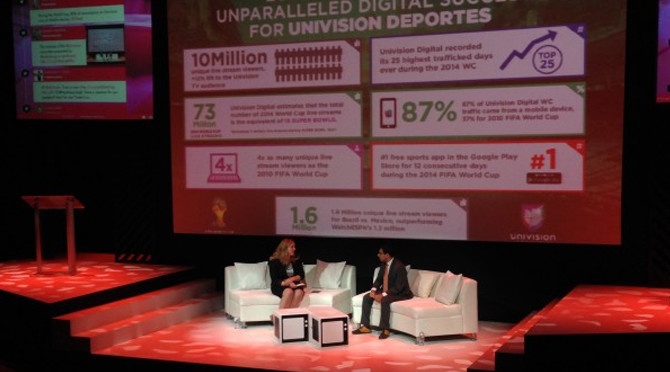TV’s Golden New Age and the Change it’s Ushering In
Oct 29, 2014 Beth Monaghan
As she took the stage at Hill Holliday’s TVnext Summit CEO Karen Kaplan proclaimed, “Every aspect of the TV business will be reimagined.”
This kicked off a day of insight into how TV is changing. The conversation was about more than TV though: it was about our culture, our communities and our world. It was about the coveted “consumer” that marketers are trying to reach, engage and influence. And that consumer is changing almost as quickly as the programming.
As Kaplan noted, in the past year four of the six Emmy dramas ran in environments with no advertising slots. If you haven’t heard that HBO and CBS plan to launch streaming services next year, you might be the last one to know.
Early in 2014, we at InkHouse conducted a study of 1,000 consumers and we pulled ourselves out of our Twitter fog to learn that 73% prefer to get their news from television. Hill Holliday issued its own research at TVnext and it reinforced the prominence of TV. According to the press release, “Nearly 91 percent of survey respondents indicated that the TV set remains the device on which they watch television content most often, compared to laptops (12%), tablets (5%), and smartphones (3%).”
Many are purporting that TV is in a “New Golden Age.” But it’s not a nostalgic golden age – it’s a progressive one. All of the rules have changed.
Hill Holliday’s research showed that only 41% of respondents preferring watching live TV. The rest (the majority) preferred to either time shift (43%), binge watch (19%) or watch on demand (19%).
During her opening remarks, Kaplan noted that the next generation sees no difference between TV stars and YouTube stars. Univision’s Mehul Nagrani told the audience that 80% of World Cup consumption took place on mobile devices. And Yahoo’s Andrew Snyder said that mobile video is up 40% over last year at Yahoo and predicted that 100 million will be watching mobile video at this time next year.
While technology is certainly part of the reason that TV viewing habits are changing, the U.S.’s demographic makeup is another agent of change. Marketers often view multicultural efforts as a matter of simple translation. But as Nagrani pointed out, “It’s more important to be in culture than in language.” And millennials are about to bring big change too. We all know that they operate differently, and they are about to run the world.
Did you know that…
- By 2025 millennials will comprise 75% of the American workforce? (Brookings Institute)
- By 2043, the U.S. will be a majority non-white nation? (Marie Nelson of WGBH’s American by the Numbers)
- People of color represent $3 trillion in purchasing power? (Nelson)
- African Americans watch more television than whites (7 hours a day)? (Nelson)
- 1 in 6 Americans is Hispanic? (Nagrani)
- Hispanics are a mobile-first audience? (Nagrani)
- TV is becoming very social? Scott Lewers at the Discovery Channel told the audience that Shark Week generated 70 trending topics on Twitter the week it aired.
What’s Not Changing
Yahoo’s Snyder said that while viewing habits are changing, “the expectations around quality are not.” This is true in PR, and it’s true in advertising. It’s true in the evolving media world as well – Medium, the writing platform founded by Evan Williams of Twitter, prioritizes stories over articles. It optimizes for pieces that actually get read, not just clicked on.
A well-told story that picks up a thread of the universal will always be the secret to connecting with any audience. It is our job as marketers try to figure out which threads to pull and where to sew them.
Disclosure: Hill Holliday is an InkHouse client.

.png)




